A comprehensive deep dive into the intriguing world of the freshwater Chocolate Shrimp, in this article you will find everything from feeding and tank setups to breeding and health care!

All You Need to Know About Chocolate Shrimp For Freshwater Aquariums
Do you need a kick of excitement in your aquarium, look no further than Chocolate Shrimp and their delectable shade of brown.
This shrimp is a popular and unique brown-colored member of the Neocaridina shrimp varieties from Taiwan. It is popular among aquarists thanks to its rich chocolatey color and ease of care, making them suitable for beginners and professional shrimp keepers.
This shrimp species is also renowned for its scavenging nature, which means it feasts on almost any edible particle in its tank. This helps to clean the tank and prevent the build-up of waste from leftover meals.
Now let’s learn more about the Chocolate Shrimp and their care in this detailed freshwater shrimp overview.
Appearance and Characteristics of Chocolate Shrimp

These stunning creatures have many endearing physical qualities, making them one of the most sought-after freshwater crustaceans for home tanks and aquariums. Let’s familiarize you with Chocolate shrimp’s appearance and how to identify them swiftly.
Color
Chocolate Shrimp are deep brown, resembling dark chocolate—you can tell from their name. You may also notice varying shades of brown when you spot them in clusters. This shrimp coloration scheme adds an extra flair to the already interesting makeup of these aquatic gems.
Size
The brown Neocaridina shrimp typically extends up to 1-3cm in length, with the female appearing slightly larger than their male counterparts.
Shape
Chocolate Shrimp are small shelled shrimp with flat heads and fan-shaped tails that aid easy movement in a tank.
Behavior in a Tank Environment
Brown Neocaridina shrimps are great tank occupants as they are peaceful and social creatures with a knack for constantly exploring their habitat through active swimming. They are mostly active at night and tend to flock in groups towards food sources, or hiding places.
Setting Up the Ideal Tank for Chocolate Shrimp

This perfect shrimp needs an ideal environment to thrive. This section is where we help you figure everything out. Creating the right tank setup for Chocolate Shrimp can be achieved in a few steps listed below.
Optimal Tank Size
The recommended tank size for Neocaridina shrimp depends on whether you want to keep a small group, their tank mates, or breed them:
- A desktop aquarium with at least 2 gallons is suitable for a small group of Neocaridina shrimp.
- A 10-gallon tank or larger is recommended for a healthy breeding colony. For shrimp colonies in community tanks with other fish, a minimum of 20 gallons is recommended. We have more on Chocolate shrimp tankmates in the coming sections.
- Follow the number of shrimp per gallon rule, which recommends to have no more than 5 shrimp per gallon of water.
Neocaridina shrimp can be kept in smaller nano tanks, however, keeping your Chocolate Shrimp in a large tank is best for better movement, health and easier maintenance of water parameters.
Substrate Type
Fine-grained substrates like sands are great for shrimp tank habitats.
Our article on the 9 Best Planted Tank Substrates goes into more depth on different types of substrates for your aquarium.
Filtration
Get a sponge filter for your shrimp tank habitat; besides being the most durable and affordable choice, they’re safe enough for shrimplets (your baby chocolate shrimp) to swim without being sucked into the filter. Sponge filters also provide lots of surface area for your neocaridina shrimp to feed from, they absolutely love eating the leftover foods the filter collects.
Planted Aquarium
Incorporate a natural habitat in your aquarium with shrimp-friendly plants like Java moss and Algae. A planted tank for shrimp provides hiding spots and natural decor to make chocolate shrimps feel secure during the breeding season.
Water Parameters and Conditions
Get familiar with the appropriate water parameters required for Neocaridina shrimp care to keep them healthy and active in their habitat.
The perfect pH for your Chocolate Shrimp ranges between 6.5-8.0 with a GH of 4-10 and a KH of 1-8. Keep your water temperature between 59-86F (15-30C) except for colder areas where you may need to apply some heat. Never compromise on shrimp water quality; it is the fastest way to make or break your shrimp’s growth and survival.
Feeding and Diet

Diet plays a huge role in any shrimp’s development, performance, and existence. When feeding Neocaridina shrimp, essential foods must be added to their meal plan for balanced nutrition.
The ideal Chocolate Shrimp diet includes algae, biofilm, and shrimp-specific pellets; you can also supplement with quality dried fish and blanched vegetables like broccoli, zucchini, or cucumber.
Add occasional appetizers like Mulberry and other dried leaves to your shrimp’s food options to boost your Chocolate Shrimp diet and improve their health.
For more on feeding your aquatic pets check out The Ultimate Guide to Fish Food: Pros and Cons & Best Choices!
Breeding Chocolate Shrimp Successfully
Chocolate Shrimp are happy and frequent breeders with ideal water parameters and temperatures in the right environment. Female Chocolate Shrimp invites the males for fertilization after molting and releasing pheromones.
This video has been very helpful in identifying the sex of Neocaridina Shrimp, I highly recommend it:
Chocolate Shrimp eggs gestate for about 14 days and undergo frequent molting at the early stage of fry development. Good nutrition is essential for breeding success, so leave the molted shells in the tank for the fry to consume—they are also excellent sources of calcium.
Neocaridina shrimp reproduction is meticulous and if you keep your shrimps with other aggressive species, they may feel threatened and not breed, or your fry may be vulnerable to attack. Always make hiding spots available for the baby shrimp when they arrive.
NOTE: mixing neocaridina shrimp varieties carries the risk of interbreeding different color varieties from the different variants which will result in their offspring not inheriting their parent’s coloration. It is not a terrible thing, but if you hope to pass on the chocolate shrimp’s brown coloration, it is best to do so in a chocolate shrimp only tank. The mixed offspring would instead inherit a wild coloration.
Choosing Tank Mates for Chocolate Shrimp

Chocolate shrimps are non-aggressive and work well with most small aquatic creatures like tetras, guppies, and other non-aggressive, shrimp-friendly fish, making them a versatile option for any aquarium.
They are typically organized in groups of 10 or more to allow them to exhibit their natural behaviors, and pairing them with compatible shrimp tank species will only double the fun.
Now that you know the ideal Chocolate Shrimp tank mates, you must avoid adding large or predatory fish that could harm or eat the shrimp.
How to Avoid Common Health Issues in Chocolate Shrimp
The last thing you want in your aquarium is Chocolate Shrimp health problems. Since they will probably be in the tank with other species, this may complicate the situation and lead to a complete loss of your pets.
The following are the most common forms of shrimp disease you may find.
Molting problems
- Cause: Poor water quality and insufficient calcium or minerals in the diet can cause molting issues in shrimp.
- Symptoms: Incomplete molting, difficulty shedding exoskeleton, soft new shell
Check out Molting Shrimp 101: What to Expect, for more detailed information on avoiding molting problems for your pet shrimp!
Sensitivity to poor water quality
- Cause: High ammonia/chemical levels in water, inconsistency in temperature and pH levels, and poor water changes.
- Symptoms: Fatigued movement, unusual hiding, fading or darkening of colors, and increased molting pace.
Parasite infections
- Cause: The presence of planarians and hydra in water
- Symptoms: Weak swimming, appetite loss, and discoloration
Shell deformities
- Cause: Poor water quality or nutrition problems
- Symptoms: Deformed shell and abnormal shell growth in Chocolate shrimp
However, we have helpful tips for preventing shrimp diseases in your home tank. Read up!
- Increased frequency in water changes
- Maintaining a clean tank will help discover and get rid of parasitic infections.
- Ensure you provide your chocolate shrimp with a premium diet rich in nutrients.
Lifespan and Long-Term Care
A typical chocolate shrimp’s lifespan ranges from 1.5 to 2 years if kept in a well-maintained and healthy environment. Caring for this variant is easy if you understand the factors contributing to their longevity.
- The first way to extend a Chocolate Shrimp’s lifespan is to ensure stable water conditions. You must keep your KH between 1 and 8 dKH and the GH between 4 and 10.
- Maintaining a high-quality diet increases your Neocaridina shrimp longevity by supplying them with all the nutrients essential for growth and safe molting. Algae wafers, shrimp pellets, blanched vegetables, and other freshwater crustacean-friendly plant and animal matter are great for your Chocolate Shrimp.
- The third and equally important step is ensuring your tank stays clean all the time through regular water changes to avoid contamination. Keep the tank spacious, as shrimps love swimming around and observing their environment.
Enhancing and Maintaining Their Color

The alluring brown hue of Chocolate Shrimps has landed them on the favorite list of aquarists for years now, which means shrimp color enhancement is a must-have knowledge in your arsenal if you intend to begin this journey. Check out our golden tips below.
- Providing a nutrient-rich diet is an incredible hack to maintaining shrimp color.
- De-stressing your Chocolate Shrimp through effective and excellent tank management will help you get the best color out of your brown aquatic friends.
Foods and supplements rich in calcium (crushed egg shells), vitamin C (like carrots), and commercial shrimp foods like pellets can all help enhance your Chocolate Shrimp’s brown color.
Conclusion
This Chocolate Shrimp care guide is packed full of freshwater shrimp tips to help you get the most out of your vibrant brown friends, be it your home tank or a large aquarium.
Neocaridina shrimp care can be done by novice or experienced aquarists who take proper tank setup seriously. Keep close tabs on the water conditions in the tank and create a well-balanced diet to keep these shrimps healthy and active all year long.



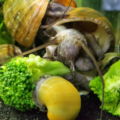

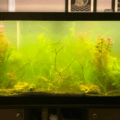
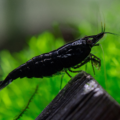
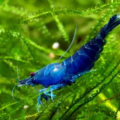
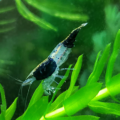

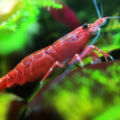
2 thoughts on “The Complete Guide to Caring for Chocolate Shrimp”